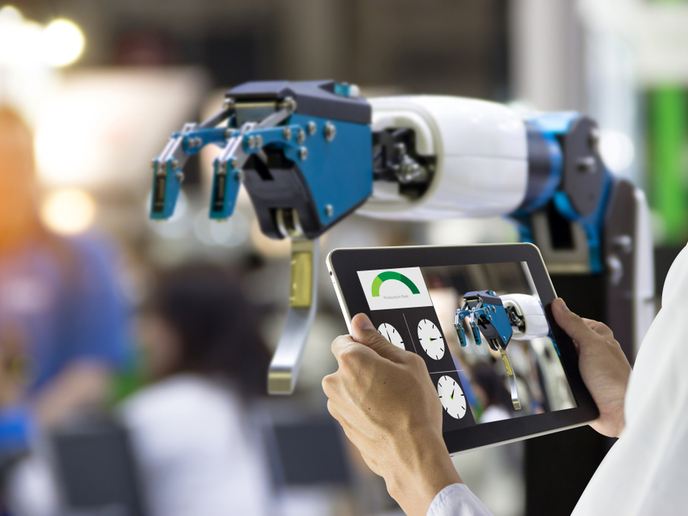Fostering human-machine collaboration in the factories of the future
The future of manufacturing will depend on the evolving relationship between humans and machines, such as robots, particularly in the design and creation of highly specialised and customisable products. The MANUWORK(opens in new window) (Balancing Human and Automation Levels for the Manufacturing Workplaces of the Future) project sits at the core of this cooperative mission, developing technologies and systems to support the design and operation of manufacturing workplaces that support human collaboration with other operators and machines. The project designed: a computational method to optimise human-automation levels for work load balancing; a framework for the evaluation of worker satisfaction, safety and health; a solution for Industrial Social Networking in manufacturing; and another solution created to facilitate the use of Augmented Reality(opens in new window) (AR) in the manufacturing workplace. “At the dawn of Industry 4.0 which asks for more complex machines and automation technology in the manufacturing workplaces, it is essential that all the necessary technology and processes are in place so that humans and automation are taking advantage of each other’s strengths,” says Kosmas Alexopoulos, MANUWORK coordinator and a Research Engineer in the Laboratory for Manufacturing Systems at the University of Patras(opens in new window).
A new reality
MANUWORK pilots experimented with wearable technologies and AR technology for human-robot interaction. The main goal is to assist operators in their daily activities, by adding text, holograms or virtual objects into the visual image of the real world thereby creating an AR image. A virtual object can show the human worker the place in which a new part best fits inside a bending metal tool. In such a case, the AR application adapts its functionality to the profile and skill level of the operator and offers training and guidance throughout this process. AR is also used for interactive visual analysis of operations between humans and robots – showing humans the no-go areas in a robot’s path to avoid accidents. Another project use case focuses on workers with cognitive disabilities. “In this case, a collaborative robot and AR were used to guide them step by step in performing electrical wiring tasks, so they don’t need to interpret electrical schematics themselves and don’t even need to be able to read properly or have good spatial awareness,” says Johan Kildal, a researcher at Tekniker (member of the Basque Research & Technology Alliance).
Testing the tech
Following trials last year, four further industrial test cases are underway. One involves the car manufacturer Volvo, in the creation of a key engine component, and another Lantegi Batuak, an organisation that provides sheltered employment for workers with disabilities. “The overall feedback is that the operators from the plant feel comfortable working close to the robots and see potential obvious uses for this type of automation in their daily work,” Alexopoulos says. The MANUWORK team considers the collaboration with Lantegi Batuak as an excellent example of how factories-of-the-future technologies are able to assist workers with disabilities to carry out jobs that were previously out of reach for them. “In this way, future factories can be more inclusive and socially sustainable,” says Alexopoulos. As new technologies, and AI innovations in particular, continue to revolutionise the way humans work, systems such as MANUWORK will be integral for ensuring a successful partnership between man and machine. “Workers should not only be able to collaborate physically with a machine; they should also be able to deal with the digital counterpart of a machine, its so-called ‘digital twin’,” concludes Alexopoulos.







